Seasoned Firewood Is Available! Call Today!
Seasoned mixed Hardwood
Dried for 9 months minimum.
1/2 Cord $175
Full Cord $300
Delivery charges may apply. Free delivery with in 8 miles from our location.

Imagine walking outside to find sticky sap dripping from your beloved spruce or pine tree. While this might seem like a natural occurrence, it could actually spell trouble for your tree’s health. The likely culprit? The larvae of the pitch mass borer, a tree pest that targets pine and spruce trees, leaving them sick, weakened, damaged, and vulnerable to further issues.
In this guide, we’ll explain how to identify the signs of pitch mass borer infestation, the damage they cause, and why early professional intervention is critical. Plus, we’ll share how an ISA Certified Arborist, like our experts here at Shades of Green, can help protect your trees and keep your landscape thriving.
The pitch mass borer is a pest known for targeting pine and spruce trees, particularly smaller trees under 20 feet tall, although larger trees can be affected too. These borers attack a wide variety of species, including Pinyon pine, Ponderosa pine, Lodgepole pine, Scots pine, Austrian pine, and occasionally Douglas-fir and true firs.
The problem begins when the adult moth lays eggs on a tree. The larvae hatch and burrow into the bark, creating entry holes, feeding on the tree’s inner tissue, and causing sap to exude from the wounds. Left untreated, this can lead to significant damage, weakening the tree and leaving it susceptible to further pest invasions or structural failure.
Trees stressed by environmental factors such as drought, over-irrigation, soil compaction, mechanical injuries, or pruning cuts are particularly vulnerable to infestation.
It’s critical to identify and treat these pests early to prevent long-term damage to your tree’s health.
To protect your trees, you’ll need to know the telltale signs of a potential pitch mass borer problem. Look out for these symptoms:

One of the first indicators is excessive sap dripping or forming hardened globs on the bark, also known as pitch masses.
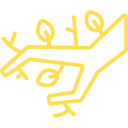
Repeated infestations can lead to weakened areas on branches and the main trunk.

Infested trees may appear stressed, with yellowing needles or thinning foliage.
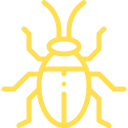
Infested trees are more likely to attract secondary pests, such as pine engraver beetles or black pineleaf scales.
If you spot these signs, taking action quickly is essential.
Without intervention, pitch mass borers can wreak havoc on your pine or spruce tree. Here’s what could happen:

Borer activity can weaken branches and trunks, making them more prone to breakage during storms or high winds.

Severe infestations can target critical areas of the tree, cutting off nutrient and water flow, which could ultimately lead to the tree’s death.

Damaged trees are more prone to additional pest invasions or fungal infections.
By understanding the potential risks, it becomes clear why addressing an infestation early is vital to protecting both the affected tree and surrounding plants in your landscape.
While it might be tempting to tackle insect control on your own, managing pitch mass borers requires expertise. Their larvae are buried deep beneath the bark, making them difficult to reach and eliminate using store-bought treatments. Additionally, improper intervention can cause further harm to your tree or leave it vulnerable to other stress factors.
A professional arborist has the tools, expertise, and knowledge to assess the infestation’s severity and implement a safe, effective solution.
An ISA Certified Arborist is specially trained to identify tree diseases and pest infestations like pitch mass borers. They adhere to the highest industry standards, ensuring your tree is cared for with environmentally responsible and effective methods. These experts can:
With the right care, many trees recover and flourish after a pitch mass borer infestation.
At Shades of Green Tree Care, we understand how vital your trees are to your landscape. If you’re dealing with sap dripping from your spruce or pine tree, our team of ISA Certified Arborists is here to help.
We’ll identify whether pitch mass borers—or another issue—are causing the dripping sap and tree stress.
Using industry-leading methods, we eliminate pests safely and effectively, ensuring minimal impact on your tree and surrounding plants.
After treatment, we’ll implement strategies to decrease the risk of future infestations, such as improving soil health or advising on proper watering techniques.
From regular pruning to monitoring for pests, we’ll ensure your trees stay healthy for years to come.
The best way to handle pests is to avoid problems in the first place. To protect your spruce or pine trees from pitch mass borers:
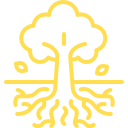
Keep your trees well-watered, but avoid over-irrigation. Ensure the soil remains aerated and nutrient-rich.

Avoid mechanical damage to the tree, and take care when pruning to prevent open wounds where pests could enter.
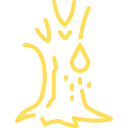
Check for signs of sap dripping or entry holes, particularly during the growing season.
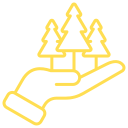
Regular checkups from an ISA Certified Arborist can help catch problems before they become severe.
Proactive care goes a long way toward maintaining the health of your trees and the beauty of your landscape.
Dripping sap and pitch masses may seem like minor tree issues, but they could be signs of a much bigger problem—pitch mass borer infestation. Recognizing the symptoms and addressing them promptly can save your tree from irreversible damage.
That’s where we come in. At Shades of Green Tree Care, our ISA Certified Arborists provide expert diagnosis, treatment, and long-term care for your trees. Don’t wait—catch the problem early and keep your landscape thriving.
Seasoned mixed Hardwood
Dried for 9 months minimum.
Delivery charges may apply. Free delivery with in 8 miles from our location.
